
Frank Alvin Gotch was an American professional wrestler. Gotch was the first American professional wrestler to win the world heavyweight free-style championship, and he is credited for popularizing professional wrestling in the United States. He competed back when the contests at championship level were largely legit, and his reign as World Heavyweight Wrestling Champion is one of the ten longest in the history of professional wrestling. He became one of the most popular athletes in America from the 1900s to the 1910s. Pro Wrestling Illustrated described Gotch as "arguably the best North American professional wrestler of the 20th century".

Georg Karl Julius Hackenschmidt was an Estonian strongman, professional wrestler, writer, and sports philosopher who is recognized as professional wrestling's first world heavyweight champion.

Capitol Wrestling Corporation (CWC) was an American sports promotion company. Run by Vincent J. McMahon from the 1950s until the 1980s, the company was originally a professional wrestling and boxing promotion and later became the holding company for the World Wide Wrestling Federation (WWWF), later the World Wrestling Federation (WWF). In 1982, the CWC was acquired by Titan Sports, Inc., owned by Vincent J.'s son Vincent K. McMahon. The CWC was the precursor to today's WWE, currently run by Nick Khan as president and owned by TKO Group Holdings.

Joseph Raymond "Toots" Mondt was an American professional wrestler and promoter who revolutionized the wrestling industry in the early to mid-1920s and co-promoted the World Wide Wrestling Federation. Some of the stars Mondt helped create from the 1920s through the 1960s included Wayne Munn, Jim Londos, Antonino Rocca, Bruno Sammartino, Stu Hart and Cowboy Bill Watts.
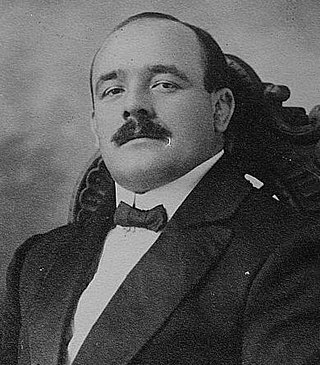
Jan Stanisław Cyganiewicz, better known by his ring name, Stanislaus Zbyszko, and frequently referred to in the contemporary English-language press as Zbysco, was a Polish strongman and professional wrestler. He was a three-time World Heavyweight Champion at his highest profile in the United States during the 1920s. The surname Zbyszko was only a nickname, given to him by friends due to his bravery when he was a child. The name comes from a fictional medieval Polish knight in the historical novel, The Knights of the Cross by Henryk Sienkiewicz. Stanislaus Zbyszko was the brother of Wladek Zbyszko (1891–1968).
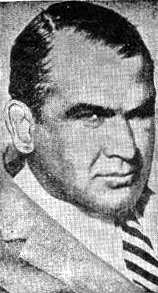
Robert Herman Julius Friedrich, better known by the ring name Ed "Strangler" Lewis, was an American professional wrestler and trainer. During his wrestling career, which spanned four decades, Lewis was a four-time World Heavyweight Wrestling Champion and overall recognized officially as a five-time world champion. Considered to be one of the most iconic and recognizable sports stars of the 1920s, often alongside boxer Jack Dempsey and baseball player Babe Ruth, Lewis notably wrestled in over 6,000 matches and lost only 32 of them.
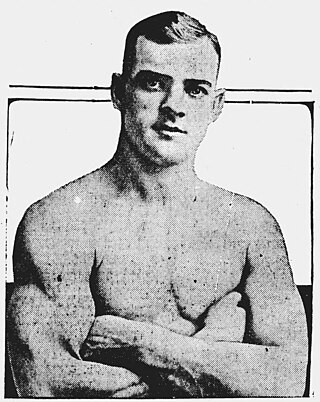
Earl Caddock was an American professional wrestler and World Heavyweight Champion who was active in the early portion of the twentieth century. As the first man to bill himself as "The Man of 1,000 Holds", Caddock was one of professional wrestling's biggest stars between the years of 1915 and 1922.
Adolph Ernst, better known for his ring name Ad Santel, was a German-American professional wrestler, considered one of the greatest practitioners of catch wrestling. He was a World Light Heavyweight Champion for several years. Santel also billed himself as the World Judo Champion during his feud with the Kodokan judo school.

Catch wrestling is a classical hybrid grappling style and combat sport. It was popularised by wrestlers of travelling funfairs who developed their own submission holds, or "hooks", into their wrestling to increase their effectiveness against their opponents. Catch wrestling derives from various different international styles of wrestling including several English styles. The training of some modern submission wrestlers, professional wrestlers and mixed martial artists is founded in catch wrestling.
Władysław Cyganiewicz, better known by the ring name Władek Zbyszko, was a Polish catch wrestler, professional wrestler and strongman. "Zbyszko" was his older brother Stanislaus's childhood nickname, borrowed from a fictional medieval knight in the novel Krzyżacy; both brothers used it as their ring name.

Paul Forbes Bowser was a professional wrestling promoter who was active from the 1920s to the 1950s in the Boston area.

John Pesek was an American professional wrestler and greyhound racing dog breeder. Nicknamed 'The Nebraska Tiger Man' for his ferocity, aggression and catlike dexterity, Olympic freestyle wrestling gold medallists Robin Reed and Russell Vis both regarded Pesek as the greatest wrestler they ever met. He was a one-time National Wrestling Association World Heavyweight Champion.
A promoter works with event production and entertainment industries to promote their productions, including in music and sports. Promoters are individuals or organizations engaged in the business of marketing and promoting live, or pay-per-view and similar, events, such as music concerts, gigs, nightclub performances and raves; sports events; and festivals.
The Gold Dust Trio was a group of promoters who controlled the world of professional wrestling during the 1920s while also making several fundamental changes to the industry's business model and operations that would ultimately change the direction of the sport toward pseudo-competitive exhibition. The Trio was composed of the era's dominant World Heavyweight Champion Ed "Strangler" Lewis and his manager Billy Sandow, as well as fellow wrestler and creative visionary Joseph "Toots" Mondt.
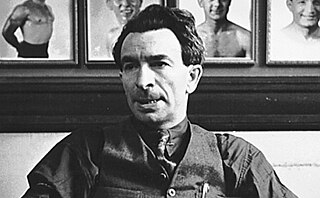
Jack Pfefer was an American professional wrestling promoter during the early-to-mid twentieth century. He pioneered an earlier form of sports entertainment, as he was one of the first promoters to visualize the pro wrestling business in the mold of theater. However, he developed an infamous reputation when he exposed the sport's inner secrets to the mainstream press in a spiteful attack that nearly destroyed the entire industry.
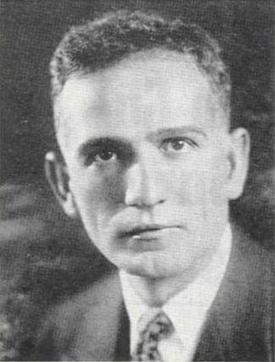
Thomas Nicholas Packs was a Greek-American professional wrestling promoter. He was one of the top promoters over the first half of the 20th century and was responsible for building one of the nation's most prestigious wrestling territories in St. Louis.

The history of professional wrestling, as a performing art, started in the early 20th century, with predecessors in funfair and variety strongman and wrestling performances in the 1830s.

The World Heavyweight Wrestling Championship was the first recognized professional wrestling world heavyweight championship created in 1905 to identify the best catch as catch can wrestler in the world.

Paul "Pinkie" George was an American professional wrestling promoter, boxer and businessman best known as the visionary behind, and first president of, the National Wrestling Alliance. He operated the NWA's Iowa territory, one of the primary members of the NWA based in Des Moines. Described by Sam Muchnick as the father of the NWA George was inducted into the NWA Hall of Fame in 2014.

The International Professional Wrestling Hall of Fame (IPWHF) is an American professional wrestling hall of fame and museum that is located in Albany, New York, at the MVP Arena.

















